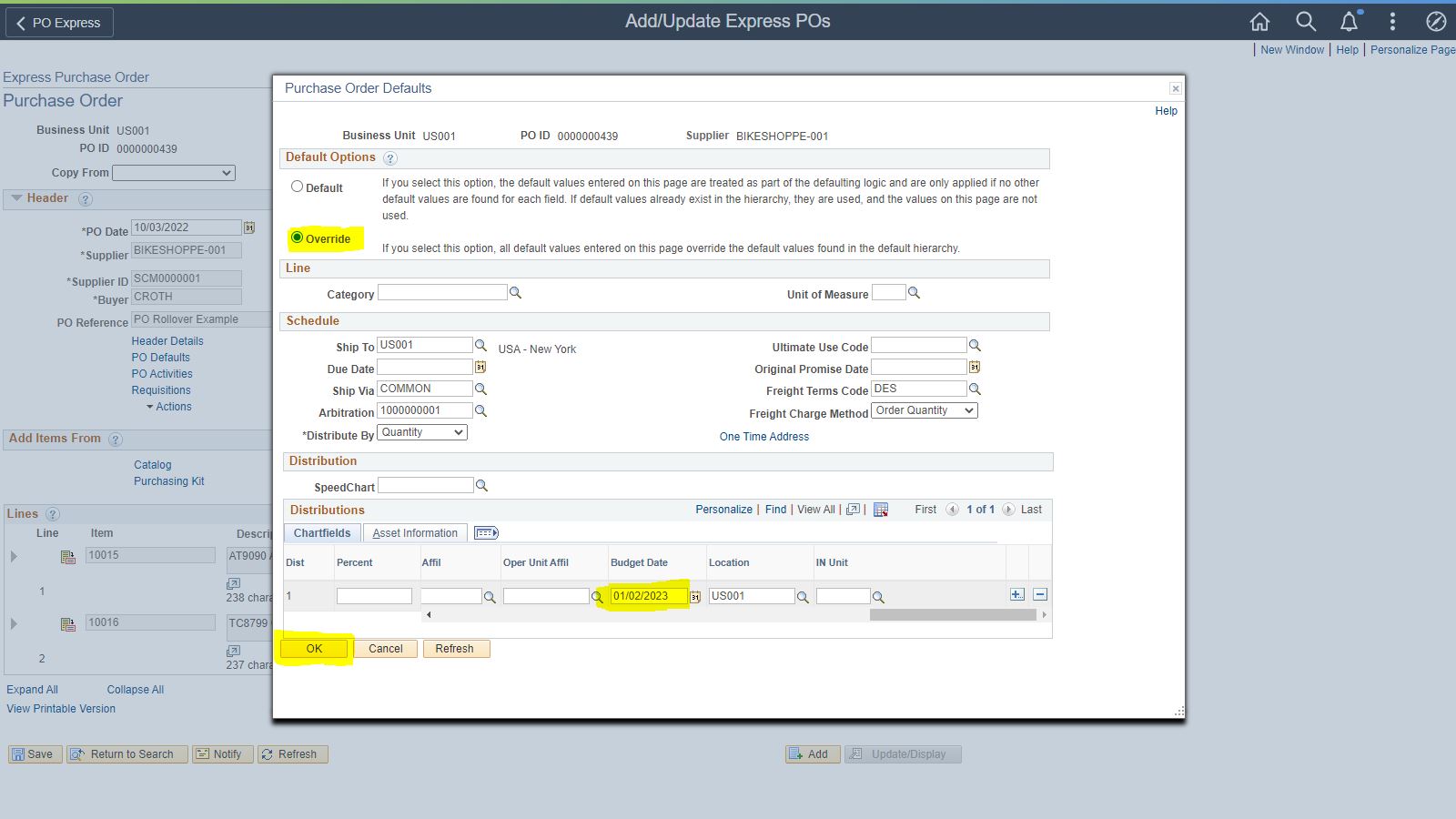With 2022 quickly coming to a close, is your organization ready for year-end activities? Let’s be honest, who is ‘truly ready’ for year-end processing? Year-end processing spans multiple departments and requires a coordinated effort, not to mention there are several steps to ensure the books are properly closed. If your organization has a ‘Year-end Playbook’ to reference, then you are way ahead of the game. Maybe you need to dust off the playbook or update the steps to simplify the closing process. Whatever your situation is, please know each organization has different requirements, steps, procedures, and business processes.
One of our customers recently asked if PeopleSoft could provide an automated way to roll over Purchase Orders that had zero dollars remaining. They have Purchase Orders that need to be available in the following budget year but may have a zero balance. They are manually updating purchase order lines with $1 and then run the PO Rollover process to systematically roll them over to the new budget year.
PeopleSoft doesn’t provide an automated process to systematically rollover purchase orders with a zero balance. The PeopleSoft PO rollover process is designed to move the remaining encumbrance on a purchase order to the next budget period. Therefore, that would defeat the purpose of rolling over purchase orders that do not have an encumbrance balance. However, we identified an alternate process to manually override the Budget Date using the PO Defaults page. This provides the same result but with fewer keystrokes reducing the risks of user errors as well.
On the PO Defaults page, select Override and enter the new budget year and click OK to continue.

Next, select Apply to All Distribs and click OK to continue. This will update each PO Distribution line with the new budget year.

The final step is to run Budget Check and you are done.
Another tip came from a recent discussion posted on the Higher Education User Group (HEUG) – Procure to Pay Discussion. It suggests organizations should limit the number of Purchase Orders being processed to 1,000 or less. Some customers claim this also lowers the risk of running into issues during processing.
